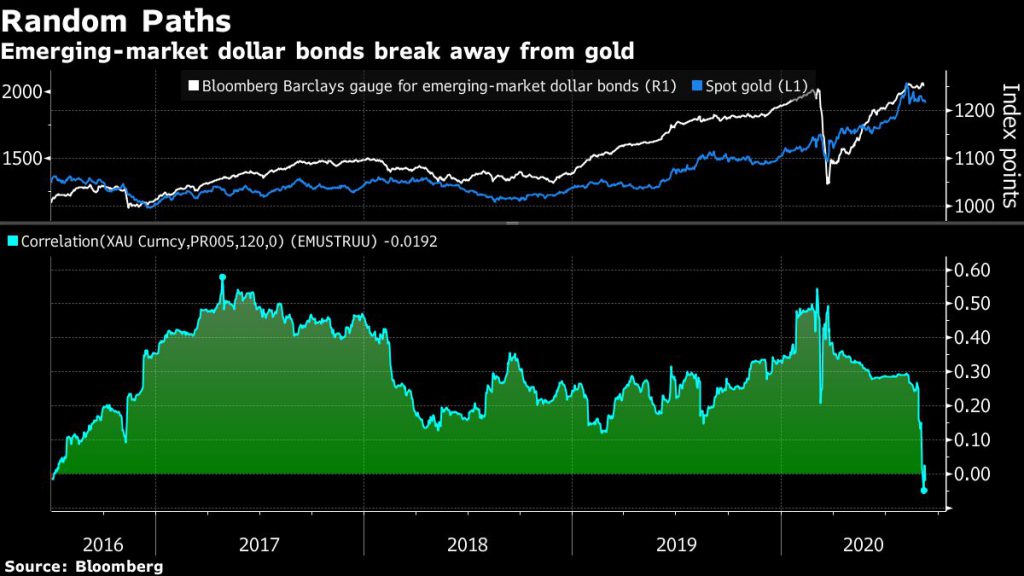
There is new evidence that the once-mighty dollar effect — when markets traded everything in relation to the U.S. currency — has faded.
The 120-day rolling correlation between gold and a Bloomberg Barclays gauge of emerging-market dollar bonds has fallen below zero for the first time since July 2016. That means the two assets have stopped responding in similar ways to the gyrations in the dollar.

For years, investors traded both gold and emerging-market bonds as dollar-denominated assets, taking the correlation coefficient between them to as high as 0.54 in February this year. With sentiment depending on the dollar’s direction at any point, this overrode the normal expectation that a riskier asset like emerging-market debt should move differently from a haven like gold.
But the dollar’s rebound this month from a 28-month low is failing to signal a risk-off shift in global markets. The selloff in stocks is, by and large, concentrated in the technology and consumer-discretionary sectors, allowing old-age industries like commodities to outperform.
This has resulted in the gold rally looking tired and ripe for a correction. The precious metal was heading for four-week low Tuesday, declining even in the face of renewed tensions between the U.S. and China.
Meanwhile, emerging-market bonds are extending their gains to a sixth month, halving their average yield since March to 4%. Expectations for a growth rebound in Asian economies, easing of debt-distress bets and central-bank liquidity are driving the rally.
(By Srinivasan Sivabalan)
Comments